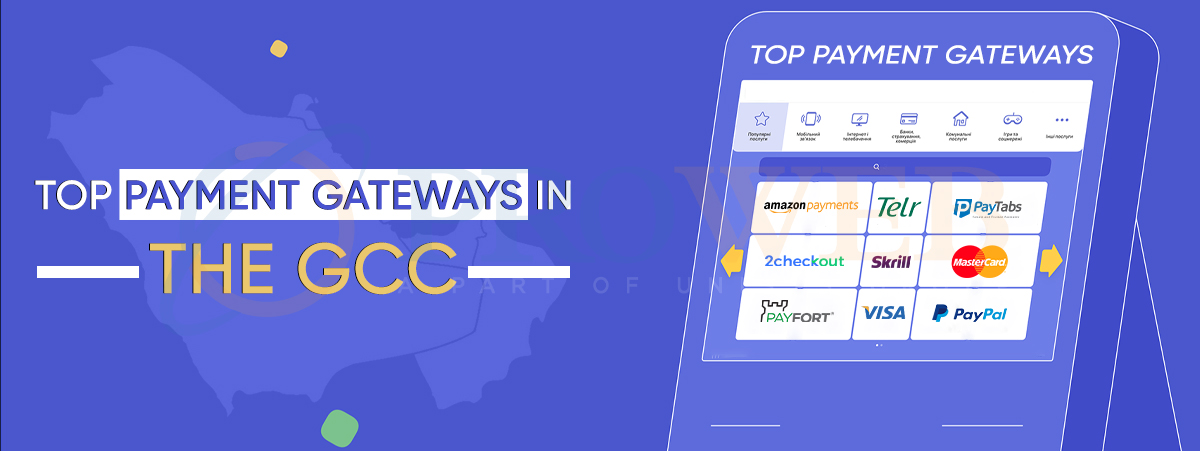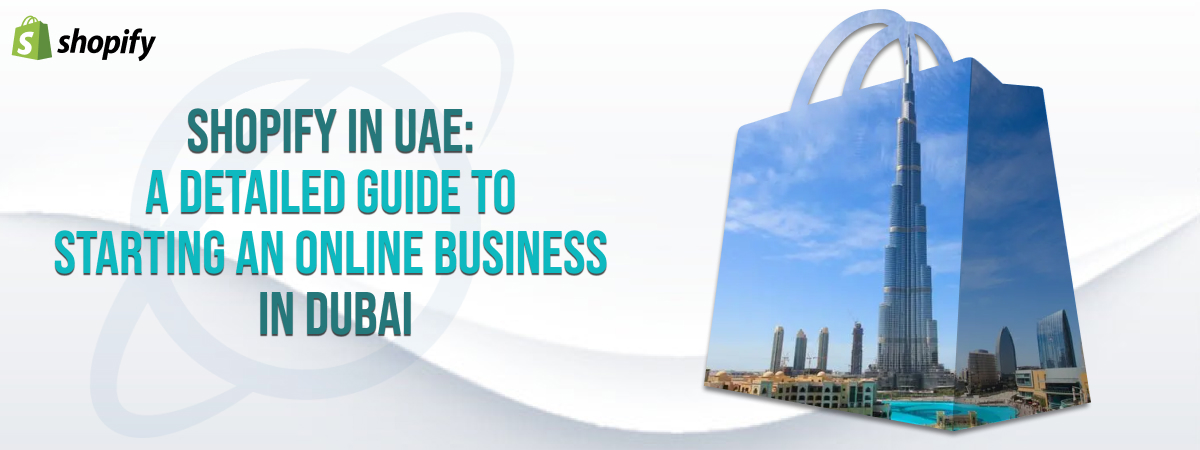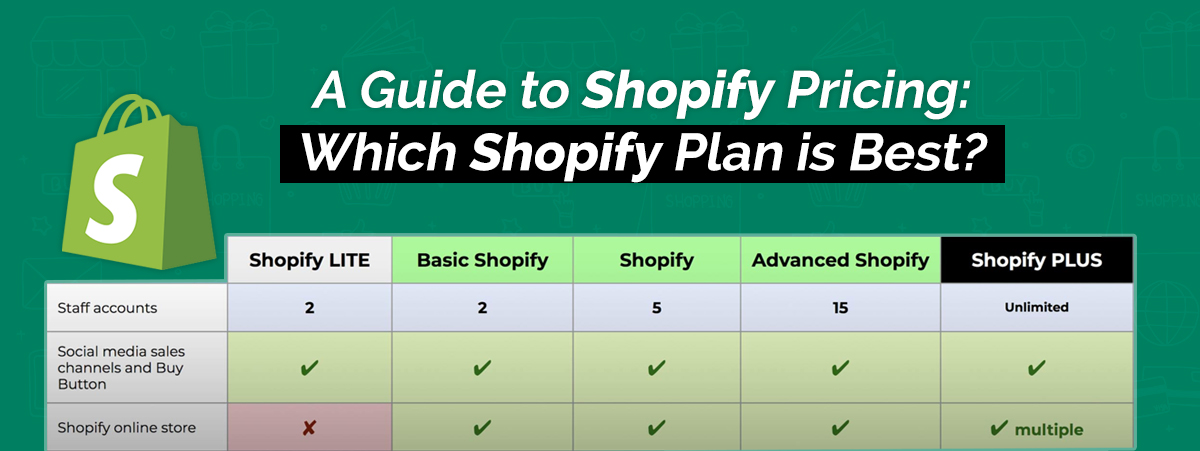Posted By : Admin
Date : November 11, 2021
Top Payment Gateways In The GCC
In the age of digitalization, where there is an upsurge in eCommerce and businesses are not limited to geological barriers, it is of paramount importance to secure payment gateways. Entities need to operate on secured gateways for daily payments for their transactions, which is essential for their survival in the market. As per eCommerce and Shopify experts, their clients’ primal demand is to build and assemble applications or platforms that support various payment gateways.
What is a Payment Gateway?
In simple terms, as per the eCommerce industry, a payment gateway is a service that accredits credit cards and direct payments, engaging in eCommerce websites in UAE & other countries in the world and beyond for online retailing. However, online payment gateways involve more security checkpoints than most transactions that involve credit cards. Therefore, transactions here are completed with the help of modes other than cash.
Why specifically GCC?
The Gulf Cooperation Council (GCC) is a union engulfing the Arab States, like United Arab Emirates, Saudi Arabia, Qatar, Oman, Kuwait, and Bahrain in 1981 for political and economic cooperation. Because of the geographical advantage of being the crossroad between Western and Eastern countries, it has built robust infrastructure and well-connected air and sea routes, therefore becoming a great region to harbor business.
The Importance of Payment Gateways in GCC
The transition of business functioning on digital payment pathways comes a little later for GCC countries than in other parts of the world. As a result, it caught momentum slowly, contributing a mere 0.4% of the GDP accumulated across the region in 2015. However, now that the retailers in GCC have shaken off that inertia, nothing is holding them back and hence, they have been successful in capturing a significant market and generated revenue from USD 5 billion in 2015 to USD 24 billion and is further predicted to hit USD 50 billion by 2025.
Now that there is acceleration in business, there will be an increase in the volume of online transactions in the GCC circuit. Therefore, companies need to administer a secured payment gateway to be in tandem with the world, which is constantly evolving and is highly competitive.
Role of a Payment Gateway
- To ascertain the correct gateway, we must first understand the role of an efficient pathway for payment.
- A payment gateway’s first and foremost function is to either authorize or deny transactions between a merchant and a consumer.
- It upgrades the existence of an eCommerce platform since it can offer ease of payment to its customers both locally and worldwide.
- The particular eCommerce platform gains credibility and builds rapport when they offer the freedom to a customer to pay with convenience.
- It adds value to the customer experience and is as fundamental to quality service as is the product.
- The lack of a secured or trustworthy payment gateway deteriorates the credibility and productivity of the eCommerce brand. Customers can add things to their cart but avoid buying the products and leave because of the payment platform’s inconvenience, insecurity, and uneasiness.
Types of Payment Gateways in the market
There are majorly 2 types of payment gateways which are as the following –
(1) Shared Payment Gateway
When making payments, when the user doesn’t redirect to another site’s payment page; it’s a Shared Payment Gateway. After clicking the payment link/button, a post form appears, and after filling this form with asked details and submitting it, payment gets processed on the same page. Upon successful validation, the user gets redirected to a “thank you” page. There are further two categories of a shared payment gateway, which are:
(a) On-site payment
The transaction is processed right on the merchant’s system, and it completes when the customer checks out from the website.
(b) Checkout on site, payment off-site
One checks out on the merchant’s site; however, the payment is processed on an offsite gateway.
(2) Redirects
In this type of payment gateway integration, a user gets redirected to another page from an eCommerce website. Here customers need to leave the site to reach a new page where payment gets completed, and after the process gets completed, you would be redirected back to where you left off. Also, this kind of gateway doesn’t require taking any confidential details on your website. Instead, they take the customer to their payment gateway site handling the security risk. In this type of gateway, the customer is “redirected” to the payment platform directly. This is also known as a ‘Hosted Payment Gateway’.
How is a Payment Gateway different from a Payment Processor or Payment Aggregator?
As someone who wishes to integrate a payment gateway with their site and is entirely new to this idea, one may get confused between payment processors and payment aggregators. However, all of them serve different purposes and to be able to leverage those features for your establishment; you must know the difference.
- Payment gateway
This receives the consumer’s credit or debit card information and then sends this to the payment platform. It is the very first stage a customer has to go through when they agree to pay.
- Payment Processor
It is the next stage in the transaction which starts from the gateway. The information of all the stakeholders in a divested transaction is processed here securely.
- Payment Aggregator
Some companies are a combination of gateway and processor. For example, PayPal has its payment gateway, Pay Flow, and it does need merchants to set up a separate merchant; account for processing payments.
Working of a Payment Gateway:-
Keeping in mind that a payment gateway service can be provided by both banks directly and or a payment service provider authorized by a bank, a procedure is followed every time to settle a payment, when a consumer places an order for a service or product to a merchant who has enabled payment gateway. The procedure starts right from the customer entering his card details and finally making it to the merchant’s account, settling the transaction.
The steps involved in this whole payment gateway are:-
Step 1. Once the consumer places the order online and proceeds to make the payment, he must enter his credit/debit card credentials.
Step 2. The card details are then secured through an encrypted mode for security by Secured Socket Layer encryption, exchanged between the browser and merchant’s web server.
Step 3: After this, the merchant sends the transaction details to their adopted payment gateway, SSL encrypted connection to the payment server supported by the payment gateway.
Step 4: The payment gateway transforms the message received from the merchant, which is XML, to ISO 8583 or any variant format understood by EFT Switches. Then the transaction information is forwarded to the payment processor employed by the merchant’s acquiring bank.
Step 5: The payment processor then forwards the transaction information to the card association, like Visa, Master, and American Express cards.
Step 6: Now, the credit card issuing bank receives the authorisation request, which verifies the credit or debit available and then communicates a response back to the processor, the same way it received an authorization request, with a response code, that shows whether the request has been accepted or denied.
Step 7: The processor forwards the authorization response to the payment gateway. The payment gateway receives this response and forwards it to the interface used to process the payment. This procedure is called Authorisation or auth, and it takes merely 2-3 seconds in general.
Step 8: Now, the merchant fulfills the order. The above process is repeated to ‘clear’ the Authorisation by completing the transaction. After he has met the order, the merchant does this after he shipped the order/ performed the service.
Step 9: The merchant submits all his approved authorizations in a “batch” at the end of the day to his acquiring bank for settlement through its processor.
Step 10: The acquiring bank finally settles the “batch” request of the credit card issuer.
Step 11: The credit card issuer then pays the settlement to the acquiring bank the next day.
Step 12: The acquiring bank immediately deposits the approved funds’ total into the merchant’s nominated account either the very same day or late by the next day maximum.
How to choose the best payment gateway?

As established, choosing the right pathway for payment is quite essential for the business in the GCC, especially the given global market fabric, where each business unit competes to capture trade across countries and impact markets in distant regions; that is, they all wish to have a diverse customer base for optimum productivity.
But a diverse customer base has diverse demands, which involves having the best payment gateway, which a tradesperson must choose, keeping the following aspects in mind.
(i) Security
The security of the transaction is the priority of any business that enables online payment. It cannot be emphasized enough how important it is for the customers to trust the transaction pathway with their personal information. Therefore, such a mode must comply with PCI – DSS standards (Payment Card Industry – Data Security Standard).
(ii) Customer Experience
The user experience of the pathway is also of much importance since if it is not easy, quick, seamlessly swift processing and customizes payment, the users will not rely on it. It is a part of customers’ shopping experience only; hence it must be customer friendly and not complicated.
(iii) Choice of Payment
Every payment gateway should provide customers with the option to choose their mode of payment at their convenience. It could be debit/credit card, net banking, mobile wallets, UPI, or other prevalent payment modes.
(iv) Merchant Onboarding
As apparent that online transactions are crucial for every trade unit in the market, the gateway providing smooth and swift merchant onboarding are also vital. Moreover, the option processing and set-up fees and rates should be affordable for every merchant.
(v) Acceptance of Worldwide currency
Since the world has become a global village, interconnectivity runs thanks to the internet and digitalisation profoundly; therefore, the gateway must support multi-currency transactions.
Things to keep in mind for security:-
- Make your business PCI (Payment Card Industry) compliant. The PCI-DSS has codified specific measures for safeguarding the security of the data involved in the communication of the credit card in the whole transaction.
Although it isn’t necessary for establishments from GCC to be PCI compliant, it is highly recommended for the long run.
- Always go for a payment gateway partner who constantly updates their eCommerce security measures. This ensures that the gateway is not prone to malware due to stagnancy and tells how much the company takes security seriously.
How do payment gateways keep data safe?
- Since it is clear as day that the security of customer’s and merchants’ information is the most vital aspect to be considered when choosing a payment gateway, we must know how payment gateways keep the data of both parties secured.
- Standard Security Layer or SSL is the standard protocol used in securing online transactions. It protects sensitive information and also validates a customer’s identity. Whether a payment pathway operates on SSL can be determined by checking the “https” at the beginning of the web address.
- Three Domain Secure or 3Ds protocol is a messaging protocol developed by EMVCo. It adds on as an additional surface of security to authenticate customers and merchants.
- The data is encrypted to make sure that it is incomprehensible to anyone except you. Thus, it cannot be manipulated by anyone else.
- Tokenisation has lately become another popular way of securing sensitive information. All of it is replaced in a string of encrypted characters.
4 Points to keep in mind while choosing a Payment Gateway
(I) Transaction Fees
It’s normal to stumble upon the charges any payment gateway will apply for using their app and processing payments. Either it’s a fixed fee per transaction made or a specific amount percent from each purchase, or even a mix of both. The cost of withdrawing funds to your bank account is also included in transaction costs.
(II) On-Form Payments
Some payment gateways will collect the payment on your website using a simple form, while others will redirect users to the payment gate page for processing payments. It’s an essential factor for those who prefer a pre-built form on a website integrated with a payment gateway.
(III) Card Type
Many payment gateways directly receive payments from credit/debit card customers. It helps in saving customers time from registration and creates account processes. But it’s necessary to know what type of card is accepted by the gateway and which supported locations.
(IV) Recurring Bills
The process of setting up and managing subscription payments every month without facing the hassle of dealing with this action manually is a facility offered by a few payment gateways; the recurring bill.
Charges for payment gateways:-
The charges for a particular payment gateway adopted depend on the following aspects:-
- Business model
- Services & features merchants require from a payment gateway
- The fee of the software
- Fee for setting up
- Fee for maintenance
- Transaction discount rate in regards to the payment mode.
Most prevalent payment gateways in the GCC:-
(1) Amazon Payment Gateway
Amazon Payment Services is a principal payment gateway in all GCC countries except Bahrain, made by one of the world’s top multinational companies Amazon. It accepts 100+ currencies, and the pathway is credited for both ease, access and affordability. The recurrent fee is AED 200 in the UAE, SAR 200 in Saudi Arabia, QAR 200 in Qatar, OMR 20 in Oman, and KD 12 in Kuwait with no initial set-up fee. The price per transaction is 2.80% and an additional 1.00 as an exchange cost in UAE and Saudi Arabia. While it is 2.75% + 0.10 as an additional exchange cost in Oman. The same is 2.85% + 1.75 in Qatar and 2.75% + 0.08 in Kuwait. An extra monthly fee of AED 4.00 and SAR 4.00 in UAE and Saudi Arabia, respectively, and KD 0.02 in Kuwait is paid with a set-up charge of 0.25 in all countries to check on any false actions in the payment arrangement.
(2) Telr
As MENA’s first PCI-DSS certified payment gateway company, Telr has been a core instrument for enterprises across GCC. The award-winning payment aggregator provides services to establishments in various fields, and since the stack is built in-house, it customizes its services easily as per the needs of its client base. Telr has an intricately tiered pricing plan when compared to others. It does not charge any monthly fee, and there are no charges for domestic debit card transactions under USD 26; however, for more than USD 26, it charges 0.9%. The charges vary from 2.20% to 2.50% for domestic credit card transactions as per the plan chosen. For international card transactions, it charges around 3.25% to .50%.3 For net banking-based transactions, it charges in the range of 2.20% to 2.50%. It charges 2% for wallet-based transactions, and the one-time setup fee varies from USD 33 to USD 67.
(3) Paytabs
The next in line for a popular payment gateway in GCC is Paytabs. It was developed in Saudi Arabia to serve SMEs in the MENA (the Middle East and North Africa) region. It offers services at a recurrent fee of USD 49.99 uniformly across the globe. Moreover, the fee for initial set-up is free with no extra monthly fee either. After that, the price per transaction is 2.85%, with an additional exchange cost of USD 0.27 per transaction and is subject to a USD 49.99 minimum transaction fee. Further, the set-up charge is around USD 250 and an exchange cost of 1.00%.
(4) 2Checkout
One of the most sorted payment gateway by the entrepreneurs in the GCC since 2006, 2 Checkout was a revamped version of the Checkout pathway. It accepts 17 currencies. The price per transaction ranges from 3.5% and an exchange cost of around 2% to 5%. In August 2020, 2 Checkout was acquired by Verifone, becoming one of the fastest-growing payment gateways since it processes 10.3 billion transactions annually.
(5) Faster Pay
Born in 2012 in the UK as an e-wallet service, it spread to other major global markets, including the GCC, by 2019. Keeping the price per transaction 3.9% and additional cost chargeable for exchange of USD 0.30, the company provides services to diverse companies such as Shopify websites, travel and hospitality, iGaming, eCommerce and Video Games.
(6) Skrill
The platform, known for its sheer ease in operation and highly user-friendly interface, Skrill was evolved by Paysafe Holdings, a UK-based company. They offer services at a price per transaction of 2.50% in UAE, Saudi Arabia, Qatar and Kuwait, and 5.00% in Oman and Bahrain. However, the exchange cost is fixed for all nations, which is 4.49% of the transaction. One can trust the credibility of Skrill by the fact that it is now the official Global payments partner of football legend AC Milan.

A business must always know all the areas of the payment gateways that they can leverage. Adopting a quality payment gateway impacts the consumer’s experience in leaps and bounds. Therefore the security, efficiency and fast processing are non-negotiable or uncompromisable on the brand’s end. However, to induce any payment pathways mentioned above, an entity must install a connection module or develop a custom extension supporting the payment pathway platforms. To make the right choice and develop an efficient and effective extension, we are always ready to help you with our prowess and experience of more than ten years in designing and developing eCommerce entities.


Since GCC is now the focal point of the global marketplace, adopting as inclusive and diverse payment gateways as possible will only act as a catalyst for the market to pick up the pace, especially in the present time of the pandemic where even shoppers are purchasing commodity from their home and wish it to be delivered to their doorstep directly without any exchange of cash hand to hand. Therefore, all the countries of GCC must employ resources and invest optimally in adopting the best possible payment gateway for their businesses.











